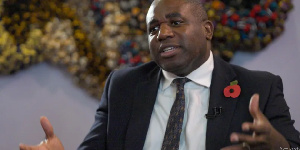Opinions of Wednesday, 3 August 2022
Columnist: Alice Sena Lamptey
Giving back to our roots; a viable complementary model for socio-economic development in Ghana
With Ghana at the IMF for the 17th time, Ghanaians and the international community are raising questions about why several countries that have adopted Western Democracy are failing economically and socially.
To break Ghana’s cycle of socioeconomic quagmire, the search for alternative and complementary development models continues even as experts predict and remind us going to IMF is a bandage on a festering sore.
Rethinking new models for our socioeconomic development reminds me of an often ignored culturally acceptable and potentially viable complementary model of giving back to our roots.
In our passion to copy from the Western world, this age-old principle and practice has eluded the majority of us. More so with the onset of foreign religions and the introduction of other concepts and forms of giving.
As a potentially viable model for accelerated socio-economic development it is important we define and clarify the concept of giving back to our roots as investing in not donating to and the recommended implementation approach is a cycle of engaging and facilitating identifiable targets (individuals, families, groups or entire communities) identifying specific priority needs; mutually agreeing on solutions and implementation; raising and monitoring the diversity of resources and collectively evaluating success and impact.
A recent video circulating on “Ghana's only billionaire living in a forest" has triggered and reaffirmed my belief in the need to reignite in Ghanaians the spirit of giving back to our roots.
In March 2020 soon after COVID-19 struck, Togbe Komla Kunde V a prominent Chief from the Alavanyo Traditional Area called to draw my attention to the deplorable state of the only Senior High School in our traditional area. A retired educationist and family, Togbe requested my assistance to mobilize support for the School’s rehabilitation and improvement in academic performance.
I prayed about Togbe's request and decided to take up the challenge. I reached out first to the nucleus and extended family home and abroad, then to friends and acquaintances. To my pleasant surprise, many were those who responded positively with ideas and also gave generously beyond expectation. In record time an institution that ranked bottom on the national education league table is slowly and surely inching upwards in infrastructure, morale, and academic performance.
As we mobilized support for education other needs were identified and brought to the fore for attention using the same concept of giving back to our roots. Key among the work in progress are rehabilitation of neglected family homes, youth empowerment and livelihood, church infrastructure rehabilitation, and community mobilization generally, all of which are visibly changing the community landscapes. Implementation capacity, the magnitude of finance, logistics, time, and coordination required no doubt are major challenges.
My observation and lessons learned?
1. We all have roots.
2. Our roots are mostly the most deprived and vulnerable.
3. Our roots need and deserve our giving back support.
4. Our roots should be the primary target of giving back.
5. Casting my mind back to humble beginnings l am amazed at God's immense grace and mercies.
6. With the search for new models for accelerated socio-economic development, l am convinced the time is now to reverse attitudes and behaviors and give back to our roots.
7. More so in light of the failure of Western models and increasing vulnerabilities.
8. Giving back to our roots has the potential of immediate strategic complementary game changer.
9. Implementation no doubt will face challenges and one size will not fit all.
10. Some day we will return to or be returned to our roots.
Let’s borrow a leaf from Jewish philanthropy. Specifically the concept of Tzedakah, a form of social justice in which donors benefit from giving as much or more than the recipients. So much more than a financial transaction, Tzedakah builds trusting relationships and includes contributions of time, effort, and insight (Jacquelyn DeGroot: Jewish Philanthropy: The Concept of Tzedakah Learning to Give)
From early childhood, Jewish children learned their responsibility was to care for other Jews in need. Though the methods are now more complex, the motivation for Tzedakah endures through the centuries to sustain the Jewish people, enhance Jewish life, and strengthen the Jewish community for today and the future.
May the Lord grant us wisdom and grace for retrospection and introspection.
God bless our homeland Ghana ???????? and make her greater and stronger.











